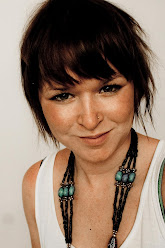
Graphic work- Extract from accompanying booklet
In Transition
Time, dereliction and beauty are woven together in ways that add depth to our lived experience of urban landscapes. Together these spaces make up an elusive indeterminate landscape, hovering over, under and between bulky contemporary urban developments. Armstrong H.(2006)
How are derelict and ruined spaces seen? As French Landscape architect Christophe Girot (2004), describes, they are ‘Landscapes of contempt’ seen as ugly and unpleasant by a city that is growing and changing. These spaces are waiting for better use, held in a locked transition until they become something new. Through our growing fascination with architecture and space In Transition developed from the notion of penetrating the impenetrable parts of the city which are dying and have been hidden from view. We wanted to challenge the ideologies that surround these inaccessible spaces and reconstruct them in a new light through video and temporary interventions.
How are derelict and ruined spaces seen? As French Landscape architect Christophe Girot (2004), describes, they are ‘Landscapes of contempt’ seen as ugly and unpleasant by a city that is growing and changing. These spaces are waiting for better use, held in a locked transition until they become something new. Through our growing fascination with architecture and space In Transition developed from the notion of penetrating the impenetrable parts of the city which are dying and have been hidden from view. We wanted to challenge the ideologies that surround these inaccessible spaces and reconstruct them in a new light through video and temporary interventions.

Extract from Post Magazine Layout and photographs by James Isles, Graphics by Tara Atkinson
The city functions as a constant decay and rebirth, but it’s the newness that propels the. The city has to rebuild itself constantly to remain culturally agile, and if it doesn’t have a sense of constant newness and upheaval, it’s a dying city. Aitken, Doug (2006).
Underlying traces of memory and paranoia become significant when investigating the interiors and architectural form of these ruins, thus creating a further displacement of the individual in the city. Only through memory were we able to respond to this notion of the uncanny within architectural form and truly embody it through the filming and editing processes, creating a heightened dream like sensation which the viewer can become encapsulated in.
The city functions as a constant decay and rebirth, but it’s the newness that propels the. The city has to rebuild itself constantly to remain culturally agile, and if it doesn’t have a sense of constant newness and upheaval, it’s a dying city. Aitken, Doug (2006).
Underlying traces of memory and paranoia become significant when investigating the interiors and architectural form of these ruins, thus creating a further displacement of the individual in the city. Only through memory were we able to respond to this notion of the uncanny within architectural form and truly embody it through the filming and editing processes, creating a heightened dream like sensation which the viewer can become encapsulated in.

Screen shot from In Transition Glass works installation
As Helen Armstrong discusses in Time Dereliction and Beauty;
Both hauntingly familiar and unfamiliar, these uncanny spaces allow for reflective engagement with time, problems of identity, self and other, the psyche and dwelling, the individual the metropolis. Armstrong, Helen, (The Landscape Architect, IFLA Conference Papers May 2006)
Both hauntingly familiar and unfamiliar, these uncanny spaces allow for reflective engagement with time, problems of identity, self and other, the psyche and dwelling, the individual the metropolis. Armstrong, Helen, (The Landscape Architect, IFLA Conference Papers May 2006)
In Transition Glass works Installation ( Guerrilla Screening)
Installed as triptych within an abandoned Glass works factory within Leeds, the experimental video is used as a temporary intervention of space and time, bringing the place to life for a final commemoration. Once recorded and re-shown, the installation becomes a permanent but personal memory between the building and artist, and as a result challenges how this event has become an inaccessible memory like the derelict places themselves.

Air shot from balcony of derelict glass works warehouse

Getting dark in the warehouse, hot head lamp gets turned on, warehouse comes alive

Still from James Isle's photography

screen shot of last section of triptych installation

Screenshots from the Installation DVD

Screens provided by Lumen
This project has now been submitted for Creative responses to uncovering and rediscovering the city- seminar which is being held within October- this year.
More information TBC shortly
More information TBC shortly

No comments:
Post a Comment